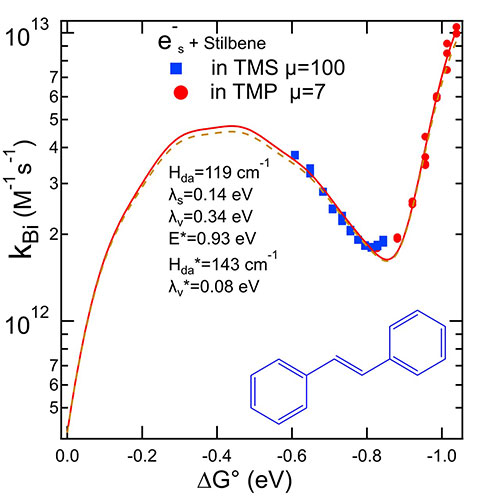- Home
-
Research Groups
Division Groups
- Artificial Photosynthesis
- Catalysis: Reactivity & Structure
- Electrochemical Energy Storage
- Electron- and Photo-Induced Processes for Molecular Energy Conversion
- Neutrino and Nuclear Chemistry
- Surface Electrochemistry and Electrocatalysis
Associated Groups
- Catalysis for Alternative Fuels Production
- Nanostructured Interfaces for Catalysis
- Structure and Dynamics of Applied Nanomaterials
- People
- Operations
- News
- Events

Electron- and Photo-Induced Processes
Continuously Tuned Driving Force for Bimolecular Electron Transfer

The inverted region of the Marcus theory, usually absent for bimolecular electron transfer reactions, is clearly observed for electron attachment reactions to molecules in nonpolar fluids. Application of pressure increased the energies of the solvated electron reactants letting us continuously adjust the free energy change. Inverted behavior is enabled by the very high mobilities of the solvated electrons which raise the diffusion-controlled encounter rates so high that they do not limit the reaction rates. The nonpolar media used in these experiments reduce reorganization energies, enhancing inverted behavior. Still, for every case showing an inverted region, the presence of low-lying excited states in the product radical anions led to regions of increasing rate constants that began at the energies of excited states of −0.54 to −1.2 eV. While continuum models predict no solvent reorganization energy in nonpolar liquids, fits to the data found solvent reorganization energies of 0.05–0.4 eV supporting ideas advanced in theories of Matyushov.
Phys. Chem. B., 2019, 123, 9206 DOI: 10.1021/acs.jpcb.9b07845




